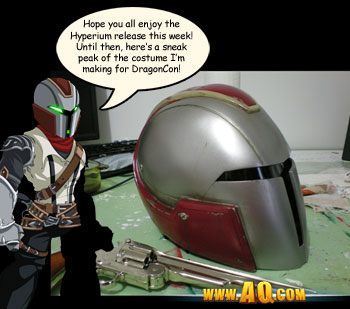I'm doing some LED light boxes as I type. Well, not quite as I type, I'd get styrene cement on the keyboard, but you know what I mean.
Green LEDs are traditionally the weediest. There are better ones, now, which use the same sort of technology as the blue ones and achieve both more brightness and a deeper, richer colour. The old style green ones, which is probably what you have in your computer keyboard and that sort of thing, are really rather pale and yellowish, and not very satisfactory. You can also, of course, use white ones and filter them, although that'll cost you a lot of efficiency. It does let you have any shade of green you like, though.
Yes there certainly are different types of LED. Some are low-current and intended as indicator lights, some are intended for absolute maximum output, some include optics to diffuse or concentrate the beam, etc. Absolutely all LEDs must be used with a current-limited power supply, which is a pedantic way of saying they need a series resistor, always, or as near to always as makes no difference outside an electronics lab. People will tell you that you don't need one in certain circumstances, but you are crashingly unlikely to encounter those circumstances when building costumes, especially if you want maximum output. Resistors are cheap and it's easy to calculate the value you need. Skipping this may work for a few hours, but the light output will gradually degrade and the device will eventually fail.
Diffusing light will make it less bright, of course. If you're after an even block of colour, especially if you need to do it in limited depth (as you do for a helmet) there are effectively two solutions: you can use electroluminescent panel, as beloved of the Tron people, or you can use an edge-lit panel as is done in things like television backlights. EL panel is easy, can be cut to shape, is flexible, very thin, and lights up evenly, but it's expensive and frankly not that bright unless driven very hard which limits its life to a few hours (and remember, it's expensive). It can be hard to make EL panel look good outside of controlled lighting situations such as a club or night exterior. With the edge-lit panel, it's effectively a chunk of acrylic sheet with a coating on one or both sides that diffuses light into an even (within limits) field, into the edge of which you fire LEDs. The Perspex brand name is "S-Lux", though there are probably others, and it's used to make things like poster display frames and point-of-sale displays in shops. There is no limit, other than battery power, heat and physical space, to the amount of light you can pump into a bit of this stuff and it can be much, much brighter than EL panel. It isn't even that expensive, although most places are used to selling 6x4 foot sheets of it for promotional displays and you may get funny looks if you ask for a three inch square. It's not particularly magic, it's just plexiglass with a frosted finish, albeit carefully optimised for this application, and you can probably get workable results by sanding the surface of clear sheet. I scored some bits of S-lux just by asking for a sample pack - the amount in the sample, about the size of a sheet of paper, is probably enough to do the job for you.
If you have enough depth you can build a light box and just put layers of diffusion filter in the front. If you do this, try putting one bit of diffusion half way down the box and another bit of diffusion at the end, otherwise you can end up with a weirdly directional looking thing. Mock it up in cardboard and sticky tape first and ensure you're getting results you like. Diffusing filter material is made for the film and theatrical industries by people like GAM, Formatt, Lee Filters, etc, and can be bought off the roll. Lee #216 is my favourite for this sort of thing, but in general you're after frost or diffusion filters. They also make filters for colouring light and you can pick your shade of green - get on the phone and ask for a swatch book of samples.
In general, though, it's quite difficult. LEDs look intense, but that's only because they're emitting over a very small area. Diffuse it, and you lose that punch. So, you may find you end up needing very large amounts of power (and large amounts of batteries to run it) to get the look you want. In the movies, things like this are done in very controlled lighting conditions, and possibly enhanced in postproduction.
HF


